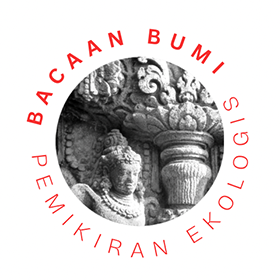Locals get a nasty surprise when they see what modern mining does to their land. JEFF ATKINSON attended a conference about it.
In December last year, environmental activists from all over Indonesia gathered in Banjarmasin, South Kalimantan, to discuss how to combat the negative social and environmental impacts of mining.
Indonesia is one of the most mineral rich areas on the face of the planet, and mining companies from around the world are showing an increasing interest. But increased activity is also increasing problems for communities in mining areas. No more so than around the Freeport gold and copper mine in Irian Jaya, where the conflict has led to loss of life.
While Freeport represents an extreme case, conflict between mining companies and landowners is on the increase in all the mining areas of Indonesia, including Kalimantan.
The first
The Banjarmasin gathering was the first ever NGO advocacy and networking workshop on mining. Organised by the environmental umbrella group WALHI (Wahana Lingkungan Hidup Indonesia), it brought together more than 50 representatives from non-government organisations (NGOs) all over Indonesia. There were also several groups of affected landowners, including two people from Freeport.
The workshop heard a common story from the communities, of rivers polluted by mine wastes, run-off and chemicals, of fish, crabs and aquatic life dying, domestic animals and people becoming sick, land being taken for mining without proper compensation, and of traditional mining (panning) being made impossible by silt in the rivers and streams.
Australia
Three groups of landowners from different parts of Kalimantan gave presentations at the workshop. In every case the mining company causing the problems was Australian. One was PT Indo Muro Kencana, a gold mining company 90 percent owned by the Perth-based Aurora Gold Ltd. Another was PT Kelian Equitorial Mining, owned by CRA; and the third was PT Adaro of whom the majority partner and operator is the Brisbane based New Hope Ltd.
The largest coal mine in Indonesia, Kaltim Prima in East Kalimantan, and the second largest gold mine in the country, Kelian, are both operated by Australia's CRA. Recent amalgamation with RTZ, now a shareholder in the Freeport mine, gave CRA an interest in that mine as well.
Of the ten coal mines in Kalimantan, six are operated by Australian companies, including three by BHP. Australian companies are mining for gold in Kalimantan, Sulawesi, South Sumatra and Sumbawa, for diamonds in South Sulawesi and for tin on Banka Island. And they are exploring for new deposits all over the country.
Network
The Banjarmasin workshop resolved to establish an NGO Mining Advocacy Network in Indonesia. This will enable NGOs to assist affected landowners more effectively, and will work to minimise or prevent the negative impacts of mining operations.
While not part of the Indonesian network, environment and development organisations in other countries including Australia were seen to play an important supporting role. For Australian NGOs, one obvious function is to be a source of information about Australian companies operating in Indonesia. Several groups, including Community Aid Abroad, have already taken up this role.
Two clear issues emerged from the workshop. First, given that so many of the people affected by mining, particularly in Kalimantan and Irian Jaya, are minority indigenous communities with traditional land rights, there is a need to re-assert those rights and the traditional laws upon which they are based.
Second, participants expressed a need to re-assert the importance of the small scale mining many communities in mining areas traditionally engage in. This is a more equitable form of resource exploitation, in which benefits go directly to the local community rather than to a company or the government.
Awe inspiring
On the final day of the workshop, participants travelled by bus into the interior of Kalimantan to visit an Australian operated open-cut coal mine, at Paringin near Tanjung. The huge open-cut pit was an awe inspiring sight, as were the artificial hills created by the dumping of overburden and waste rock. Currently bare, these were to be eventually planted with commercial timber.
In the pit itself, giant mechanical shovels tore away at the coal and dumped huge loads onto the backs of trucks to be carted away to the coast and loaded onto ships bound for Japan and other parts of Asia.
Frightening
After touring the mine site and talking to the managers, the bus load of workshop participants headed back for Banjarmasin. One young man, a farmer from another part of Kalimantan where a company is looking for coal, was asked what he thought of the mine. 'Frightening', he replied. Neither he nor anyone else from his area had ever seen a coal mine before. Its size, and the extent of the damage caused were a frightening surprise to him.
The company exploring his area had told people they were simply going to 'take the coal out of the ground, and then give the land back'. For this they would be handsomely compensated. They had no idea their land was going to be dug up and altered forever like that.
During the visit, he had been busy photographing everything. Now he was going to bring some nasty revelations about open-cut mining to the people back home.
Jeff Atkinson is National Research Co-ordinator with Community Aid Abroad, based in Melbourne.










